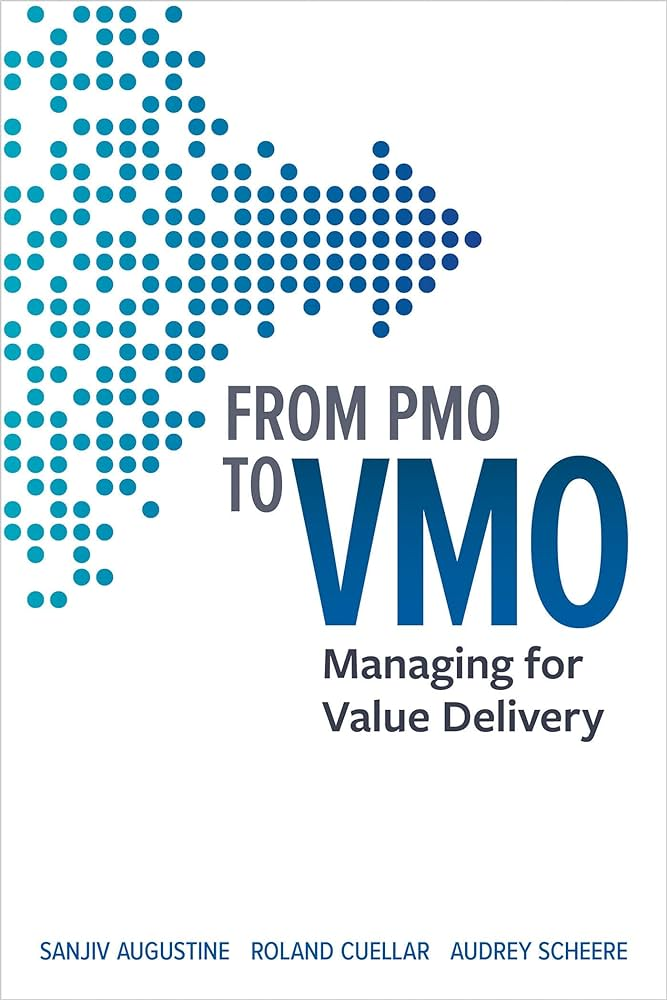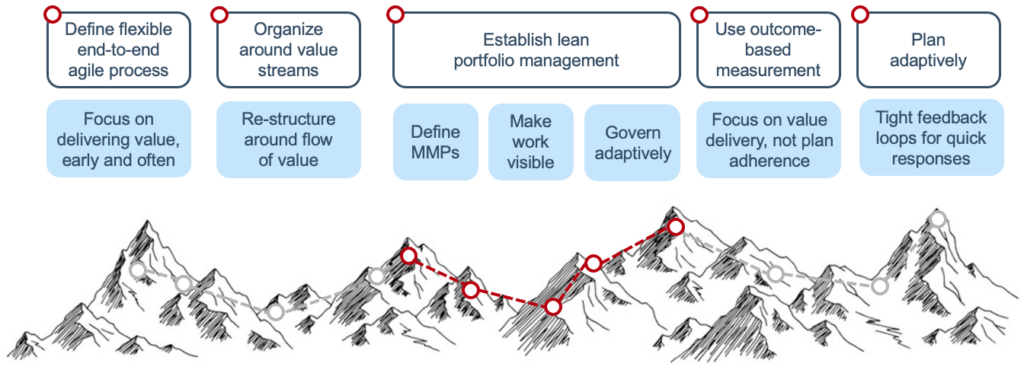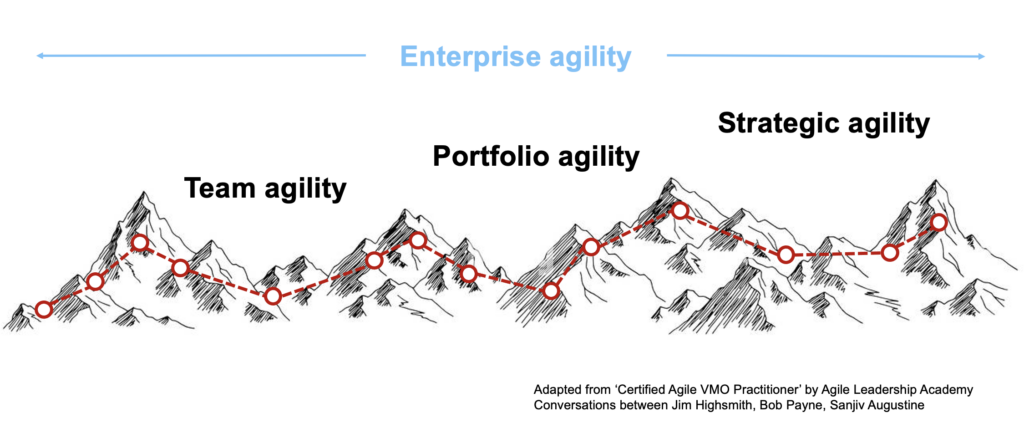The traverse to portfolio agility
In our work as coaches, we help organizations become agile. An agile organization can respond more thoughtfully—and sometimes more quickly, but not always—to changes in internal and external environments. Becoming agile means more than having your teams follow Scrum or Kanban practices. It means building the principles of transparency, inspection, and adaptation into your enterprise decision-making.
The book From PMO to VMO: Managing for Value Delivery focuses on the traverse to portfolio agility:
- The old way: Our teams are organized around internal structures and we deliver work in large batches, working from a project-based ‘book of work’. We measure outputs (budget, time, features) and we plan in annual cycles.
- The new way: Our teams are aligned to the value streams, we deliver in small meaningful increments, and we work from a prioritized portfolio backlog. We have a visible portfolio management process, we measure value in terms of customer and organizational outcomes, and we plan in quarterly cycles.

You cannot begin the traverse to portfolio agility without completing the traverse to team agility. Fortunately, there are many well-established resources available to help people implement agility at the team level: Scrum, Kanban, ScrumBan, Lean, Extreme Programming (XP).
Portfolio agility focuses on the next level up, looking at the work of multiple teams and/or products. Many people are wrestling with this challenge and there is a growing list of resources for managing work at scale: Large Scale Scrum (LeSS), Scrum@Scale, Scaled Agile Framework (SAFe), the Spotify model for scaling scrum, Enterprise kanban, Disciplined Agile, Nexus.
It can be easy to get bogged down in terminologies and processes, so it’s helpful to look at what the traverse to portfolio agility looks like on the ground.

- Ensure your teams use end-to-end agile processes and are aligned around the value you want to deliver.
- Break down the work in your portfolio into several smaller pieces, where each piece is “a unit of value impactful enough to be meaningful to customers and small enough to be quickly delivered and deployed”. These pieces are called ‘minimum meaningful product’ or ‘minimum marketable product’ (MMP), depending on your context.
For each MMP,- Clearly state the problems you plan to solve and the value you want to deliver. ‘Value’ includes the outcomes for your users/customers and the outcomes for your organization.
- Do enough discovery so that you can roughly estimate the amount of work. Say your average team runs three week sprints and costs $50,000 per sprint. You estimate 10 sprints +/-2 sprints so your rough estimate is $400K to $600K and 24 to 36 weeks (6 to 9 months). Then you weigh this cost against the value to prioritize the MMP within the portfolio backlog.
- Use a lean business case template (1-2 pages) to succinctly capture the information to support decisions about investment and priority. Identify the metrics you will use to monitor progress and assess outcomes.
- Identify the people who need to be involved in portfolio governance, clarify their responsibilities, and workshop the decision-making process together.
- Use a Kanban board to visualize the whole portfolio management flow—from intake to delivery—so you can track progress, identify bottlenecks, and uncover dependencies.
- Bring your teams together every quarter to inspect progress, re-assess priorities, and adapt your plans. Use a rolling planning horizon that looks out 18 months.
With these practices in place, your enterprise will have a clearer view of your current reality and you’ll be able to make thoughtful decisions about your future reality. Then you’ll be poised to take on the final leg in the journey to enterprise agility: the traverse to strategic agility.

If you’d benefit from support on your journey to enterprise agility, let’s connect!

